Actual and biological age of a person.
According to scientists and psychologists, some people age even earlier than their actual biological age. That is, in appearance a person is young and full of strength, but in his soul he is already a real old man, mired in doubts and depression. And no traditional medicine or salon procedures for beauty and relieving fatigue will help here.
A predisposition to accelerated aging is akin to a genetic disease that accelerates the withering process of both the brain and the body.
The following test will help you find out if you are at risk of accelerated aging.
How do you know if you're aging faster than expected?
You can find out by subtracting the proper biological age (ADB) from the actual biological age (AFA). If there is no difference between FBV and DBV or it is less than 3, then you are aging on time; if more than three, it’s time to at least change your lifestyle and habits, or better yet, consult a doctor.
FBV - DBV ≤ 3 => :)
FBV - DBV > 3 => :(
Only gerontologists can make more accurate calculations, since, firstly, more than a dozen indicators must be taken into account (which cannot be measured at home); secondly, what is much more important is not just biological age, but the so-called functional age - the body’s capabilities under load (and it will also not be possible to create them without leaving home). But at our request, scientists have compiled more simplified calculations for our readers. So…
Formulas for calculating DBV
Men: DBV = 0.629 x CV + 18.56
Women: DBV = 0.581 x CV + 17.24
Where: HF- calendar age in years.
Formulas for calculating FBV
In men: FBV = 26.985 + 0.215 • ADS - 0.149 • HDV - 0.151 • SB + 0.723 • POP
In women: FBV = - 1.463 + 0.415 • ADP - 0.14 • SB + 0.248 • BW + 0.694 • POP
Where:
■ ADS- systolic (upper) blood pressure, in mm Hg. Art. Measured on the right arm in a sitting position three times with an interval of 5 minutes. The results of the measurement at which the blood pressure had the lowest value are taken into account.
■ ADP- pulse blood pressure, in mmHg. Art. The difference between systolic (upper) and diastolic (lower) blood pressure.
■ HFA- duration of holding your breath after a deep breath, in seconds. Measured three times at intervals of 5 minutes using a stopwatch. The largest value is taken into account.
■ SB- static balancing, in seconds. It is determined by standing on the left leg, without shoes, eyes closed, arms down along the body (without prior training). Measured using a stopwatch three times with an interval of 5 minutes. The best result is taken into account.
■ MT- body weight, in kg. Measured in light clothing, without shoes, on an empty stomach.
■ POPs- self-assessment health index (SHI), in points. Determined using a questionnaire including 29 questions.
POPS QUESTIONNAIRE:
1. Do you have headaches?
2. Would you say that you easily wake up from any noise?
3. Are you bothered by pain in the heart area?
4. Do you think that your vision has deteriorated in recent years?
5. Do you think your hearing has gotten worse lately?
6. Do you try to drink only boiled water?
7. Do younger people give you a seat on a bus, trolleybus, or tram?
8. Are you bothered by joint pain?
9. Do you go to the beach?
10. Does changing weather affect your well-being?
11. Do you ever have periods when you lose sleep due to worry?
12. Do constipation bother you?
13. Do you think that you are as productive now as before?
14. Are you bothered by pain in the liver area?
15. Do you ever feel dizzy?
16. Do you find it more difficult to concentrate now than in past years?
17. Are you worried about memory loss or forgetfulness?
18. Do you feel burning, tingling, or “crawling” in different parts of your body?
19. Do you have periods when you feel joyful, excited, happy?
20. Do noise and ringing in your ears bother you?
21. Do you keep one of the following medications in your home medicine cabinet: validol, nitroglycerin, heart drops?
22. Do you have swelling in your legs?
23. Do you have to give up some dishes?
24. Do you experience shortness of breath when walking quickly?
25. Are you bothered by pain in the lumbar region?
26. Do you have to use any mineral water for medicinal purposes?
27. Do you have an unpleasant taste in your mouth?
28. Can we say that you began to cry easily?
29. How do you assess your health?
For each unfavorable answer, give yourself one point. At the same time, the unfavorable answer to questions No. 1-8, 10-12, 14-18, 20-28 is “yes”, and to questions No. 9, 13, 19 - “no”. For the 29th question, two options are unfavorable: “bad”, “very bad”.
| Determine your biological age. You can easily find out how your age according to your passport differs from your biological age.  Scientists believe that the number of years a person has lived says little about his real age. After all, everything is decided by a completely different age - biological. His clock ticks in his brain and muscles, and is not determined by an entry in his passport. Scientists believe that the number of years a person has lived says little about his real age. After all, everything is decided by a completely different age - biological. His clock ticks in his brain and muscles, and is not determined by an entry in his passport. To determine how biological age differs from calendar age, a number of specific anthropological parameters need to be measured and compared. For example, over the years, the nose becomes wider, the ears are longer, the shoulders are narrower, and the height is shorter. The lungs narrow, and the chest, on the contrary, grows, and the stomach also increases. You can also measure how the functioning of the brain, heart, vascular elasticity, hormonal changes, and so on change. Determine how young you are using another test. 1. PULSE In a 20-year-old person it can increase by 5-10 beats. For a 30-year-old, the norm is to increase by 10-20 strokes. For a 40-year-old - 20-30 strokes. For a 50-year-old - 30-40 strokes. For a 60-year-old - 50-60. And for a 70-year-old - 60-70. 2. AGE OF VESSELS (Skin elasticity). If your skin color becomes the same within 5 seconds, then you are no more than thirty years old, after 8 seconds - you are no more than forty, 10 seconds - you are currently 50 years old. Well, if normal skin color returned only after 15 seconds, then you are already 60 years old. Over 20 seconds - over 70. About "wrinkling". 20-year-olds have very soft skin and usually no wrinkles. In 30-year-olds, the skin becomes drier and the first horizontal lines appear on the forehead. In 40-year-olds, nasolabial “creases” and “crow’s feet” form in the corners of the eyes. In 50-year-olds, nasolabial wrinkles move towards the chin and wrinkles appear on the neck. 3. SPINAL MOBILITY (Flexibility). 4. MOBILITY OF JOINTS. 5. REACTION SPEED. Your task is to catch it as quickly as possible with two fingers - thumb and forefinger. After that, look at what mark you caught the ruler. If at the 20 centimeter mark, then your biological age is 20 years old, if at the 25 centimeter mark, you are already 30, 35 centimeters - 40, 45 centimeters - 60. And if you couldn’t catch the ruler at all, then at the moment you are 70 years old . 6. VESTIBULAR APPARATUS (Coordination of movements) 7. RESPIRATORY SYSTEM. 8. CONDITION OF THE LUNG. Now add up all the results obtained and divide them by eight (the number of tests). The resulting figure will be your true biological age. If this number differs by more than 5 from your passport age, then you need to take all measures to stop being nervous and worrying about little things, and also try to avoid stressful situations. But if your biological age exceeds your passport age by more than 10 years, then there are serious disorders in your body and you need to go to the clinic as soon as possible and conduct a full examination of all organs and systems. The cardiovascular system Squat test Hearing test Eyesight check |
A person’s biological age shows how much his body has worn out since birth: skin, internal organs and systems. The worse the organs work and interact with each other, the older the person is and the fewer full years of life he has left. However, it must be said that this information is not a reason for grief or despair. This is just a reason to think about your lifestyle and a good incentive to change it for the better.
 The average person lives 90 biological years. By calculating your real age, you can determine how much longer you can fully live. If in fifty calendar years you have worn out your body to the full eighty, then you have only six to seven years left in reserve. And vice versa, if at the same fifty your body is preserved like that of a thirty-five-year-old, you still have time to live.
The average person lives 90 biological years. By calculating your real age, you can determine how much longer you can fully live. If in fifty calendar years you have worn out your body to the full eighty, then you have only six to seven years left in reserve. And vice versa, if at the same fifty your body is preserved like that of a thirty-five-year-old, you still have time to live. Rejuvenation from within
We are all, unfortunately, aging, and what is important to understand first of all for those people who want to stop this process as quickly as possible is that we age not only on the outside, but also on the inside.We can see our external age-related changes in the mirror, but we cannot see the fact that old age also affects us from the inside, and this is partly why we believe that old age is only on the outside. It never occurs to us that the internal organs (liver, heart, kidneys...) look as old as the face we see in the mirror every morning.
If we can see old age from the outside, then we can only feel old age from the inside. Feel bad, feel low, feel sick. But the result of aging from the inside is always reflected from the outside in a mirror that you just have to look at. And this is not ecology and nerves, these are age-related changes in body systems. Which can be slowed down.
But, surprisingly, we try to stop the aging process only from the outside, for which, using cosmetics and anti-aging procedures, for the most part, we do not pay any attention to our old age inside, and we have no idea that old age always comes only from the inside . But wrinkles on the face and flabby muscles are only processes of biological aging inside the body, which we can see from the outside.
It is also surprising that a person, covering up old age on his face, will not understand that these are not skin problems or poor nutrition, these are all the same age-related changes in the physiological systems of the body and nothing more.
Poor health is “not tiredness and you need to get some sleep,” it’s the old age of the internal organs. Young children are tired and do not get enough sleep, but they do not feel unwell. They are always full of strength.
Modern humanity has decided for itself that old age begins after fifty, and becomes closer when you are sixty. Before that, it was just wrinkles and nothing more. Unfortunately, this is self-deception; for many people, old age begins much earlier, even when there are no wrinkles on the face yet or they are just beginning to appear.
By sixty, many people’s bodies have already become completely old inside; the person dies before reaching retirement, but they say that he died young. But in fact, they don’t die young, inside such a “young man” is the body of a very old man or woman.
Of course, it’s easier to convince yourself that the body is separate inside itself, and you yourself are separate. The appearance is in itself, and the internal organs are in themselves. It’s easier to put cream on your face, put on masks and do facelifts than to take care of the youth of your internal organs.
All anti-aging procedures are only rejuvenation of areas of the body through the skin of the face. Although the effect is still partially there, since the procedure penetrates the skin inside, and from the inside the rejuvenating effect comes back out. We do not rejuvenate our appearance, we introduce youth inside through the skin, and the skin after the procedures becomes young only because the body has become younger from the inside.
But this is still not enough. This is ineffective, because it is impossible, at least, to apply a cosmetic procedure deeply and to the entire body at once. Therefore, everything comes back quite quickly.
To make it easier to understand, I will explain it like this. An old liver, a worn-out heart, a diseased spleen, and overloaded kidneys create their own individual picture of wrinkles, spots and bags under the eyes on a person’s face. A cosmetic mask on the face will partially retouch such a picture, exactly to the depth of the skin, without reaching the liver, kidneys, heart and spleen. And after a short time, the old organs will restore the picture of the face according to their age state. That is, if the biological age of these organs is much higher than the calendar age of a person, then the face of such a person will correspond not to the photograph in the passport, but to the age of the internal organs.
Many people cannot believe that age-related changes in his internal organs are outside the passport data of the person himself. A person grows up and ages not linearly in the same way and at the same time with the whole body at once. For most people, the biological age of its internal organs differs from each other. And this difference can be very significant. A person may be forty, but by this age his liver is eighty, and his kidneys at this moment celebrated their fiftieth anniversary. And some of his organs could already have died. This is also possible.
In this case, the function of such “dead organs” is taken over by adjacent organs and systems, and if, for example, such a “dead” organ is removed from such a person, he will note to his surprise that after the operation practically nothing has changed. And this is correct, the organ has long since died as a physiological system, and the body has been living without it for a long time.
Old age on the face and poor health are symptoms that the biological age of a number of organs is far ahead of a person’s calendar age. There are many reasons why this happens.
Overload and wear and tear, organ weakness from birth, improper lifestyle and work, and so on. The result is the same, some organs are much older than others, and as a result, the young begin to conflict with the old, and the old organs cannot provide for the needs of the young, and since the human body is partially closed on itself, it happens that both the young and older organs. And a person, looking at his calendar age, continues to consider himself still young, believing that his internal organs are as young as he is according to his passport.
And of course, treating yourself as if you were young, and inappropriate stress, both nutritional and physical, which leads to even greater aging and wear and tear. But a person imposes cosmetic procedures on himself and believes that the problem has already been solved.
What to do? Is it possible to rejuvenate from the inside?
I don’t want to give you too much hope (in this matter the “naked” truth is better), but it is possible to stop the aging of your organs.
To do this, you first need to determine the biological age of a person and the biological age of his organs separately. After this, we direct all rejuvenation correction (therapy) to them.
The therapy methods themselves can be different: Denastherapy, Auricular therapy, Oberontherapy, Lithotherapy, Homeopathy, but with one significant difference - these methods will be specifically targeted at rejuvenation from the inside of specific organs. Targeted impact with rejuvenating procedures, and after stopping the accelerated aging process in the organs, transition to other organs, which must adequately interact with the enhanced properties of the renewed organs.
And so sequentially, organ by organ, it is possible to align their calendar age with their biological age, and for those who are ready to go further, i.e. continue the procedure - make the biological age less than the calendar age. Where specifically they are engaged in the processes of rejuvenation of the functions of internal organs - look on the Internet, there are already offers today. For example, ask in a search engine “Correction of the biological age of body systems” or “rejuvenation from the inside.”
* * *
And in conclusion - an interesting fact. Scientists from the National Gerontological Center of Russia conducted a large sociological study: they calculated the biological age for three groups of people - new Russians; ordinary people with low incomes, and poor but intelligent people. It turned out that low-income intellectuals age the slowest, and the new Russians age the fastest. The intense rhythm of life and endless overeating take their toll. 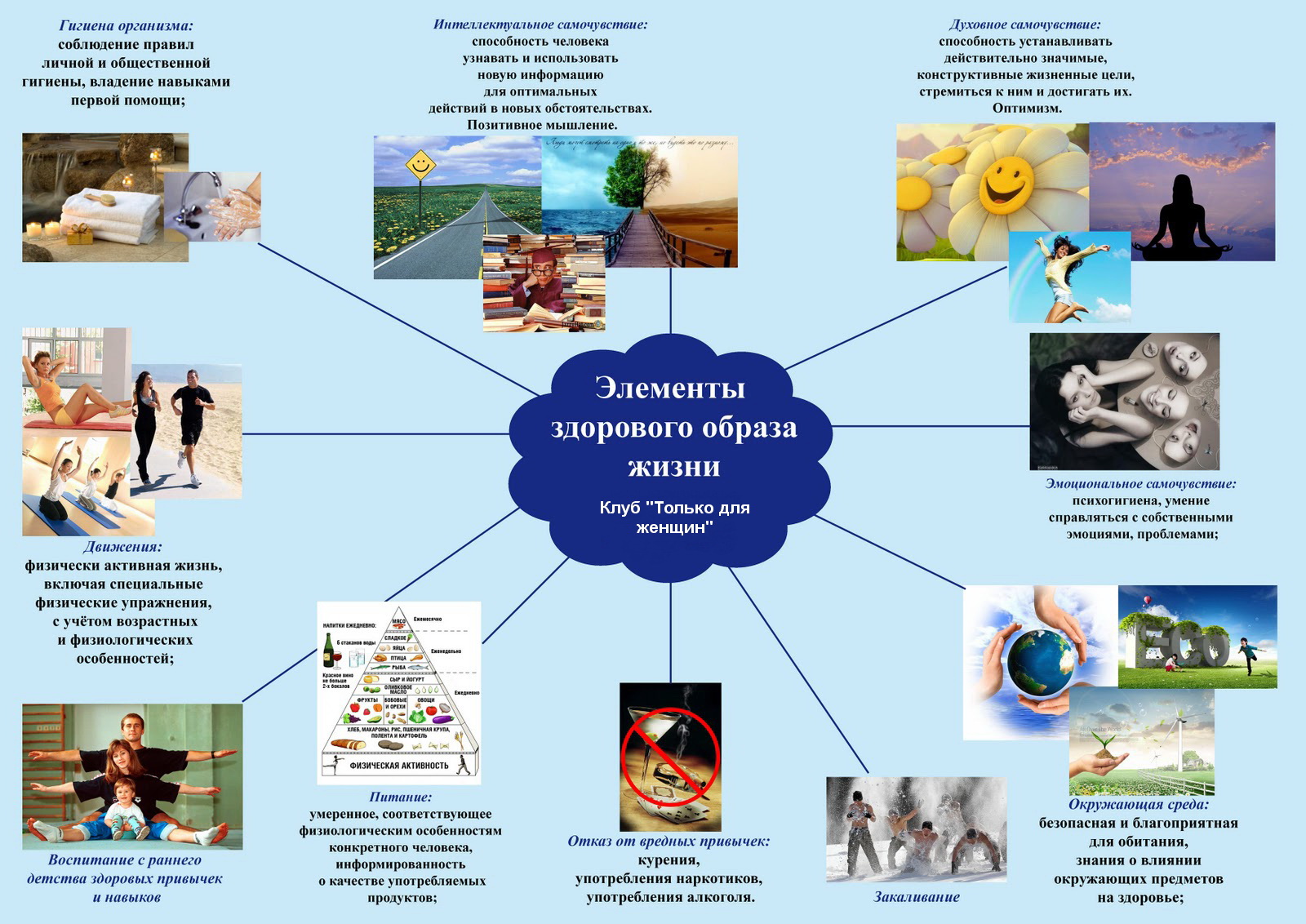


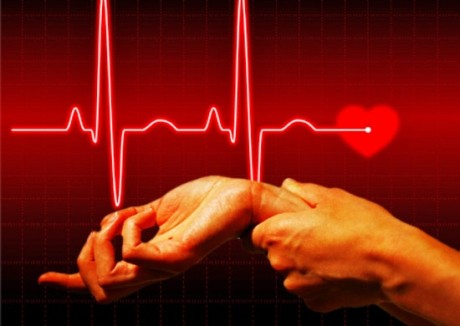 Measure it at rest. Then squat 30 times at a fast pace. How much has your heart rate increased?
Measure it at rest. Then squat 30 times at a fast pace. How much has your heart rate increased?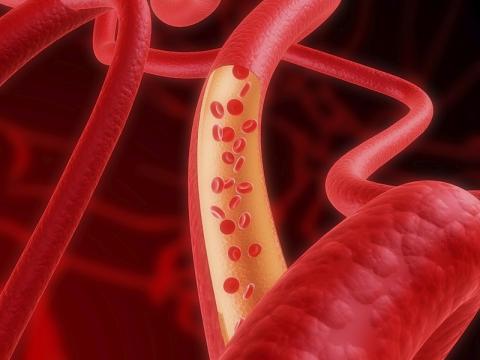 Pinch yourself on the back of your hand. You need to hold the skin in this position for five seconds. After this, we release the skin and note the time during which it will again acquire its normal appearance.
Pinch yourself on the back of your hand. You need to hold the skin in this position for five seconds. After this, we release the skin and note the time during which it will again acquire its normal appearance. Having placed your (straight!) legs together, you need to try to touch the floor with your palms. If you managed to completely place your palms on the floor, then your biological age is 30 years old, if you touched the floor only with your fingertips, you are 40 years old. If your palms could only reach your shins and did not touch the floor at all, then you are 50 years old, but if you managed to touch your knees, your biological age is 60 years old. I managed to reach only my knees - more than 70 years.
Having placed your (straight!) legs together, you need to try to touch the floor with your palms. If you managed to completely place your palms on the floor, then your biological age is 30 years old, if you touched the floor only with your fingertips, you are 40 years old. If your palms could only reach your shins and did not touch the floor at all, then you are 50 years old, but if you managed to touch your knees, your biological age is 60 years old. I managed to reach only my knees - more than 70 years.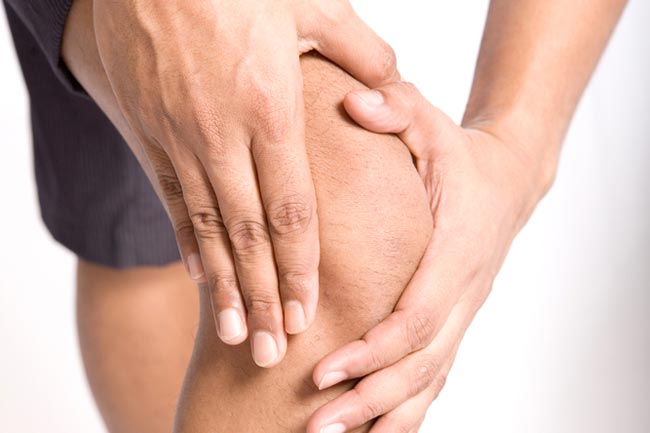 Place both hands behind your back, one on top and the other below, and clasp them together. If this exercise was easy, then your biological age is 20 years old, if your fingers only lightly touched each other - you are 30 years old, if your fingers did not touch each other at all - 40, if you could not bring your hands together behind your back - 60. And if you If you couldn’t even put your hands behind your back, then you are no less than 70 years old.
Place both hands behind your back, one on top and the other below, and clasp them together. If this exercise was easy, then your biological age is 20 years old, if your fingers only lightly touched each other - you are 30 years old, if your fingers did not touch each other at all - 40, if you could not bring your hands together behind your back - 60. And if you If you couldn’t even put your hands behind your back, then you are no less than 70 years old. Ask someone close to you to hold a ruler, the length of which is 50 centimeters. Stand facing each other. The assistant's hand should be extended and located 10 centimeters above your hand. Ask your assistant to release the ruler without warning you.
Ask someone close to you to hold a ruler, the length of which is 50 centimeters. Stand facing each other. The assistant's hand should be extended and located 10 centimeters above your hand. Ask your assistant to release the ruler without warning you.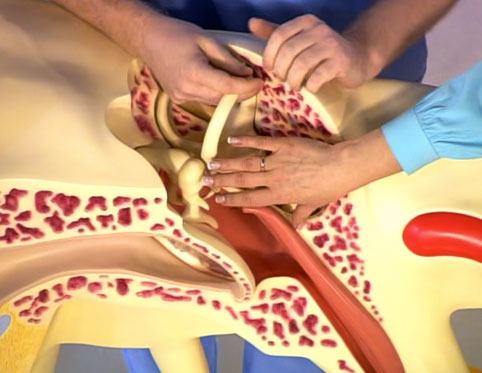 Close your eyes tightly, stand on one leg and bend the other at the knee. If you managed to stand in this position for more than 30 seconds, you are 20 years old, if 20 seconds - 30 years, 15 seconds - 50. Well, if you were able to maintain balance for less than 10 seconds, then you are 60 or more years old.
Close your eyes tightly, stand on one leg and bend the other at the knee. If you managed to stand in this position for more than 30 seconds, you are 20 years old, if 20 seconds - 30 years, 15 seconds - 50. Well, if you were able to maintain balance for less than 10 seconds, then you are 60 or more years old.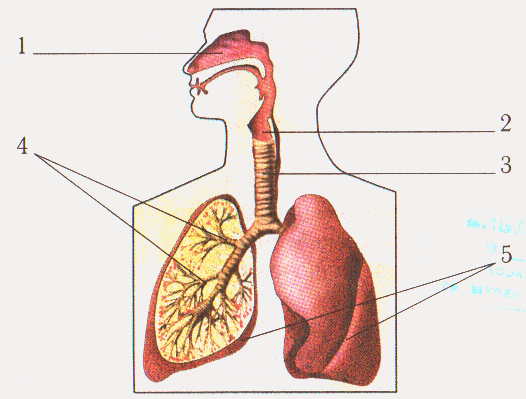 Take a deep breath and exhale slowly. Now count how many of these breaths you can take in a minute. But just take your time, otherwise you may feel dizzy from the excess oxygen in your body. If you were able to take 40 breaths in a minute, you are 20 years old, from 35 to 39 - 30 years old, from 30 to 34 - 40 years old, from 20 to 29 - 50 years old, from 15 to 19 - 60 years old, from 10 to 14 years old - 70.
Take a deep breath and exhale slowly. Now count how many of these breaths you can take in a minute. But just take your time, otherwise you may feel dizzy from the excess oxygen in your body. If you were able to take 40 breaths in a minute, you are 20 years old, from 35 to 39 - 30 years old, from 30 to 34 - 40 years old, from 20 to 29 - 50 years old, from 15 to 19 - 60 years old, from 10 to 14 years old - 70. Here are a few more exercises for those interested:
Here are a few more exercises for those interested: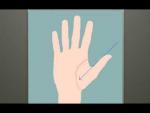

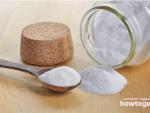


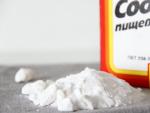
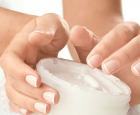 Nail care
Nail care Prom hairstyle for long hair
Prom hairstyle for long hair 18 wonderful New Year cards that even a child can make
18 wonderful New Year cards that even a child can make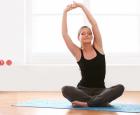 The best set of exercises for morning exercises
The best set of exercises for morning exercises